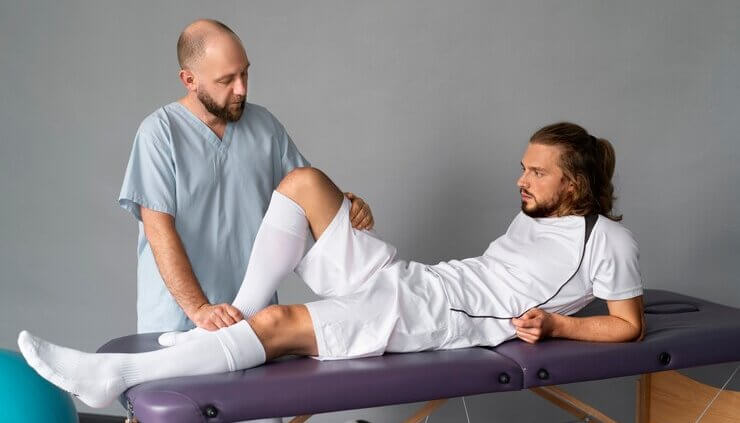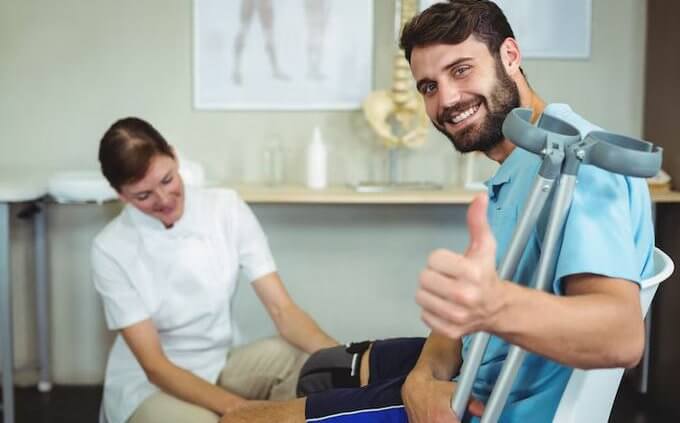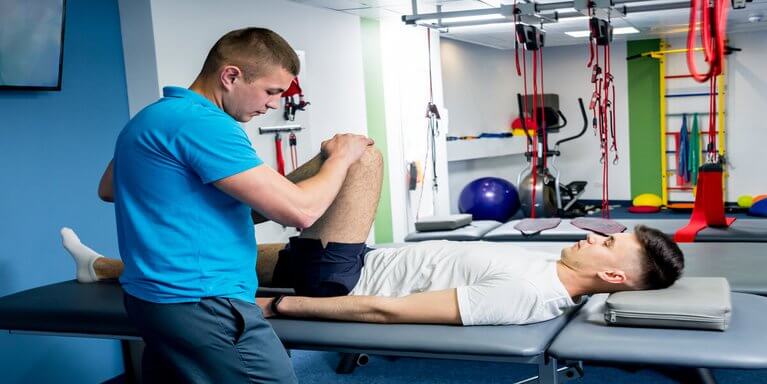Living an active life in Milton can sometimes lead to aches and pains. Whether you’re a weekend warrior pushing yourself at the gym or someone struggling with chronic pain, navigating the world of healthcare can be confusing. Two common options you might encounter are Milton physiotherapy clinics and Milton chiropractic care. But what’s the difference, and which one is right for you?
Understanding Milton Physiotherapy
Physiotherapists are healthcare professionals trained to assess, diagnose, and treat a wide range of musculoskeletal conditions. They use a variety of techniques, including:
- Manual therapy: This involves massage, joint mobilization, and other hands-on techniques to improve mobility and reduce pain.
- Exercise therapy: Physiotherapists develop personalized exercise programs to strengthen muscles, improve flexibility, and enhance balance.
- Education: They provide guidance on posture, ergonomics, and activities of daily living to help prevent future injuries.
Benefits of Milton Physiotherapy:
- Rehabilitation after surgery or injury: Physiotherapists play a crucial role in helping patients recover from surgeries like knee replacements or sports injuries. They guide patients through exercises to regain strength, flexibility, and range of motion.
- Pain management: Physiotherapy offers a non-invasive approach to managing pain caused by conditions like arthritis, back pain, and muscle strains.
- Improved mobility and function: Whether you’re recovering from an injury or simply want to move better, physiotherapy can help you achieve your goals.
- Preventing future injuries: Physiotherapists can identify weaknesses and imbalances that might contribute to future injuries. They then create personalized programs to address these issues.
Who Can Benefit from Milton Physiotherapy?
Physiotherapy is a great option for a variety of people, including:
- Athletes recovering from sports injuries
- People with chronic pain conditions like arthritis
- Individuals who have undergone surgery
- Those experiencing muscle strains, sprains, and other musculoskeletal problems
- Anyone looking to improve their overall mobility and function
Understanding Milton Chiropractic Care
Chiropractors focus on the musculoskeletal system and nervous system, particularly the spine. They believe that misalignments in the spine, called subluxations, can interfere with nerve function and lead to pain and other health problems. Chiropractors use manual adjustments to correct these subluxations and restore proper function.
Benefits of Milton Chiropractic Care:
- Pain management: Chiropractic care can be effective for managing pain in the neck, back, and joints.
- Improved range of motion: Chiropractic adjustments can help improve joint mobility and flexibility.
- Headache relief: Some studies suggest chiropractic care can be helpful for managing headaches and migraines.
- Overall well-being: Some people report feeling a general sense of well-being after chiropractic adjustments.
Who Can Benefit from Milton Chiropractic Care?
Milton chiropractic care might be a good option for individuals experiencing:
- Back pain
- Neck pain
- Headaches
- Joint pain
- Difficulty with mobility
Choosing Between Milton Physiotherapy and Chiropractic Care
While both physiotherapy and chiropractic care can be beneficial for pain management and improving overall health, they have some key differences. Here’s a breakdown to help you decide:
Focus:
- Physiotherapy: Focuses on the entire musculoskeletal system, including muscles, joints, and bones.
- Chiropractic care: Focuses primarily on the spine and its relationship to the nervous system.
Treatment Techniques:
- Physiotherapy: Utilizes manual therapy, exercise therapy, education, and other modalities.
- Chiropractic care: Primarily relies on manual adjustments of the spine.
Conditions Treated:
- Physiotherapy: Effective for a wide range of musculoskeletal conditions, including rehabilitation after surgery and injury, chronic pain management, and improving mobility.
- Chiropractic care: Primarily used for pain management, particularly back and neck pain, headaches, and joint pain.
Consultation:
It’s always a good idea to consult with a healthcare professional before starting any new treatment. They can help you determine the underlying cause of your pain and recommend the most appropriate course of action.
Chronic pain can be a debilitating condition, hindering your daily activities and overall well-being. If you’re in the Milton area and searching for “Milton physiotherapy” or “chiropractor Milton”, look no further than the Health Centre of Milton. Their team of experienced physiotherapists offers a comprehensive approach to pain relief, empowering you to get back to living a pain-free life.
Here are the top 5 benefits of choosing Health Centre of Milton Physiotherapy for your pain relief journey:
-
Personalized Treatment Plans:
One size doesn’t fit all when it comes to pain management. At the Health Centre of Milton, they understand this. Their physiotherapists take the time to understand your unique situation, including the nature of your pain, its origin, and any lifestyle factors that may contribute to it. This personalized approach ensures a treatment plan tailored specifically to your needs, maximizing your chances of achieving long-term pain relief.
-
Evidence-Based Techniques:
Health Centre of Milton’s physiotherapists stay current on the latest research and advancements in physiotherapy. They utilize a variety of evidence-based techniques proven to be effective in managing pain, including:
- Manual therapy: This involves skilled manipulations of your joints and muscles to improve mobility, reduce stiffness, and alleviate pain.
- Therapeutic exercise: A personalized exercise program can improve strength, flexibility, and range of motion, all crucial components of pain management and preventing future injuries.
- Education: The physiotherapists will educate you on your condition, empowering you to take an active role in your recovery process. They may also provide self-care techniques you can implement at home to manage your pain effectively.
-
Holistic Approach to Pain Management:
Pain often doesn’t exist in isolation. The team at Health Centre of Milton recognizes this. They work collaboratively with other healthcare professionals at the clinic, including chiropractors, massage therapists, and naturopathic doctors. This integrated approach allows them to address the root cause of your pain from multiple angles, potentially leading to faster and more effective pain relief.
-
Focus on Long-Term Recovery:
The goal at Health Centre of Milton goes beyond simply alleviating your present pain. Their physiotherapists aim to equip you with the tools and knowledge necessary to prevent future pain recurrence. They’ll guide you through exercises and lifestyle modifications designed to strengthen your body and improve your overall well-being.
-
Convenient Location and Flexible Scheduling:
Situated conveniently in downtown Milton, Health Centre of Milton makes physiotherapy accessible for residents of the area. Additionally, their extended hours, including evening and Saturday appointments, cater to busy schedules. This flexibility ensures you can receive the treatment you need without disrupting your daily routine.
Beyond Physiotherapy:
While physiotherapy is a core service offered by Health Centre of Milton, it’s not the only option. If your pain requires a multifaceted approach, the clinic boasts a team of experienced chiropractors, massage therapists, and naturopathic doctors. This multidisciplinary approach allows them to create a customized treatment plan encompassing various modalities to address your specific needs.
Taking Control of Your Pain Journey:
Chronic pain can significantly impact your quality of life. Health Centre of Milton’s dedicated team of physiotherapists can help you regain control. Their personalized treatment plans, evidence-based techniques, and holistic approach empower you to achieve lasting pain relief and live a healthy, active life.
Schedule an Appointment Today:
If you’re seeking effective pain relief solutions in Milton, look no further than Health Centre of Milton. Contact their friendly staff today to schedule an appointment and embark on your journey towards a pain-free future.
Looking to regain your health and mobility after an injury or illness? The Health Centre of Milton offers comprehensive physiotherapy services designed to help you achieve your goals.
We understand the significant impact pain and physical limitations can have on your life. At the Health Centre of Milton, we are committed to helping you regain your function and mobility so you can live an active and fulfilling life
What We Offer:
- Individualized care: Our registered physiotherapists provide one-on-one treatment plans tailored to your specific needs and conditions.
- Hands-on approach: We utilize a manual therapy approach combined with rehabilitation exercises to promote healing and improve function.
- Experienced team: Our physiotherapists are licensed and experienced in treating a wide range of conditions, including:
- Pre- and post-surgical rehabilitation
- Sports injuries
- Work-related injuries
- Age-related conditions
Beyond Traditional Methods:
We complement traditional physiotherapy with innovative modalities to enhance your rehabilitation journey, such as:
- Neurofunctional Medical Acupuncture
- Fascial Movement Taping
- Bracing
- Ergonomic Assessment
- Mulligan Mobilizations
- Laser Therapy
- Electrical stimulation
- Ultrasound
What to Expect: Your Initial Visit
When you visit the Health Centre of Milton for physiotherapy, your journey begins with a comprehensive initial assessment aimed at understanding your condition and developing a personalized treatment plan. During this visit, we recommend wearing comfortable clothing that allows access to your injured areas, as our physiotherapists will start working on your treatment right away.
Diagnosis and Treatment Planning
Your initial visit will include a thorough assessment of your medical history, physical health, range of motion, strength, posture, and functional movement. This process allows our physiotherapists to gain insight into your specific issues and develop a tailored treatment plan designed to address your unique needs and goals. We prioritize open communication and collaboration, working closely with other health professionals to ensure holistic care and optimal outcomes for our patients.
Your Path to Recovery
At the Health Centre of Milton, we are committed to empowering you on your path to recovery. Whether you’re aiming to regain mobility, alleviate pain, or enhance performance, our team is dedicated to providing compassionate care and personalized attention at every stage of your rehabilitation journey. We believe in equipping our patients with the knowledge, tools, and support they need to achieve lasting results and live life to the fullest.
Schedule Your Complimentary Consultation
If you have any questions about physiotherapy or would like to learn more about our services at the Health Centre of Milton, we invite you to schedule a complimentary consultation with one of our experienced physiotherapists. Our team is here to answer your questions, address your concerns, and provide guidance on how physiotherapy can benefit you. Contact us today to take the first step toward optimal health and wellness.



